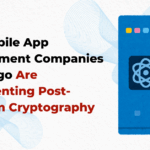
Comic Sans has frequently been the target of mockery within the design and typography communities. However, this notorious font—commonly regarded as lacking professionalism and appearing childish—may possess unexplored advantages in the field of UI/UX design services. As design trends evolve, along with user expectations and accessibility standards, Comic Sans is beginning to receive recognition for attributes that render it unexpectedly pertinent in the contemporary digital environment. This article examines the potential significance of Comic Sans in the future of UI/UX design services and discusses how a software development company might leverage its distinctive characteristics.
The History and Perception of Comic Sans
Comic Sans, a typeface that is both widely recognized and often controversial, was introduced in 1994 as a lighthearted alternative to more traditional computer fonts. Its playful aesthetic has generated a mix of admiration and criticism, ultimately becoming emblematic of informal communication and ongoing design discussions.
Origins of Comic Sans
Developed by Vincent Connare during his tenure at Microsoft, Comic Sans drew inspiration from the lettering found in comic books, aiming to convey a sense of friendliness and accessibility. Initially, it was intended to replace Times New Roman in speech bubbles for Microsoft Bob, a user-friendly interface designed for ease of use.
Controversy Surrounding Comic Sans
Throughout the years, Comic Sans has been subject to significant criticism due to its frequent and inappropriate application. Its casual and whimsical nature often conflicts with the seriousness of various contexts, such as formal invitations and corporate presentations, contributing to its controversial status within the design community.
The Unexpected Strengths of Comic Sans in UI/UX Design Services
Comic Sans is frequently regarded as a casual and unprofessional typeface; however, it possesses distinct advantages in UI/UX design services. Its high readability, accessibility, and approachable character render it a beneficial option for designs that prioritize inclusivity and user engagement.
1. Accessibility and Readability
Comic Sans is particularly effective in terms of readability, especially for individuals with dyslexia or other learning challenges. Its unique letterforms and ample spacing help to alleviate visual strain, thereby facilitating easier comprehension of text.
Why Readability Matters
For a software development company that provides UI/UX design services, emphasizing accessibility is essential. The use of Comic Sans in digital interfaces promotes inclusivity, which aligns with the overarching principles of universal design.
2. Emotional Connection
The whimsical and casual character of Comic Sans can foster a sense of friendliness and approachability. This emotional connection is particularly beneficial in applications such as children’s software, casual gaming environments, or mental health resources, where it can significantly enhance the user experience.
Leveraging Emotional Design
The objective of UI/UX design services is to cultivate intuitive and pleasurable user interactions. The capacity of Comic Sans to evoke positive emotions can be advantageous in crafting interfaces that focus on user engagement and satisfaction.
3. Versatility in Modern Design Trends
Although it is frequently linked to less professional design, the adaptability of Comic Sans allows it to excel when thoughtfully integrated with contemporary design elements such as vibrant colors, illustrations, and dynamic layouts.
Case Studies
A software development company that specializes in innovative and creative applications might consider utilizing Comic Sans in its branding strategy to differentiate itself in a competitive market. Furthermore, its application in prototyping tools can introduce an element of experimentation and enjoyment into the design process.
Use Cases for Comic Sans in UI/UX Design Services
Comic Sans, frequently regarded as a whimsical and informal typeface, can be effectively employed in UI/UX design services to craft accessible and cheerful interfaces. When applied appropriately, it has the potential to improve user experience by infusing character into designs, thereby rendering them more inviting and interactive.
1. Educational Platforms
Educational applications and websites typically necessitate fonts that are both readable and appealing to younger users. The playful nature of Comic Sans renders it a suitable option for these platforms.
2. Health and Wellness Apps
Applications centered on mental well-being, therapy, or mindfulness may incorporate Comic Sans to foster an atmosphere of warmth and approachable communication. Its informal style can alleviate user apprehension, thereby enhancing trust and receptiveness.
3. Prototyping and Wireframes
During the initial phases of design, Comic Sans can serve to diminish the intimidation associated with refined prototypes. This enables teams to prioritize functionality over aesthetic considerations.
Addressing Common Criticisms
Responding to prevalent criticisms is essential for development and enhancement, enabling individuals or organizations to fine-tune their approaches and foster more robust connections with their audience. By proactively addressing feedback, one can convert obstacles into avenues for constructive transformation.
“Comic Sans Looks Unprofessional”
Some critics contend that Comic Sans is devoid of elegance; however, the context of its use is paramount. When applied purposefully in suitable situations, the font can improve user experience instead of diminishing it.
“Comic Sans Is Overused”
Although Comic Sans has been improperly utilized previously, contemporary UI/UX design services can effectively integrate it, harmonizing its whimsical character with modern design standards.
How a Software Development Company Can Utilize Comic Sans
A software development company can innovatively utilize Comic Sans to infuse a whimsical and inviting character into its branding, user interfaces, or promotional materials. Although it is frequently regarded as informal, its application in particular scenarios can enhance a brand’s friendliness and approachability.
1. A/B Testing Font Effectiveness
The company can conduct A/B testing to evaluate user reactions to Comic Sans in comparison to alternative typefaces. The findings from these tests can guide subsequent design decisions.
2. Incorporating Comic Sans in Branding
For businesses focusing on specialized markets—such as educational applications or casual gaming—Comic Sans can contribute to the creation of a distinctive and memorable brand persona.
3. Accessibility-First Design
Incorporating Comic Sans as a choice within UI/UX design services reflects a dedication to accessibility. This approach is in line with international standards such as WCAG (Web Content Accessibility Guidelines), thereby enhancing the company’s standing in the industry.
Real-World Examples of Comic Sans in Action
Comic Sans, frequently discussed for its informal and whimsical design, has been incorporated into numerous practical applications, spanning from corporate correspondence to promotional content. Although some detractors reject it, many appreciate its distinctive and welcoming appearance for various creative endeavors.
Duolingo’s Use of Playful Fonts
The language-learning platform Duolingo employs cheerful and inviting typefaces akin to Comic Sans, fostering a friendly and enjoyable experience for users.
Mental Health Campaigns
Various mental health campaigns have adopted Comic Sans due to its soothing and non-intimidating visual appeal, highlighting its effectiveness in delicate situations.
The Future of Comic Sans in UI/UX Design Services
The role of Comic Sans in UI/UX design services has generated considerable discussion, with some advocating for its whimsical appeal while others criticize its frequent application. As design trends progress, the place of this unconventional font in professional contexts remains a subject of exploration and interest.
Resurgence in Popularity
With a growing focus on inclusivity and accessibility in UI/UX design, Comic Sans may be on the verge of a resurgence. Designers are increasingly acknowledging its advantages when applied with care.
Redefining “Good Design”
The future of design prioritizes functionality over mere appearance. Fonts such as Comic Sans question conventional aesthetic standards, prompting designers to place user requirements at the forefront of their work.
Conclusion
Notwithstanding its contentious standing, Comic Sans possesses attributes that render it a significant asset in UI/UX design services. Its accessibility, emotional resonance, and adaptability align with the changing requirements of contemporary user interfaces. For a software development company, incorporating Comic Sans into a comprehensive design strategy can improve inclusivity and elevate user satisfaction. By defying traditional design conventions, Comic Sans could potentially establish its relevance in the future landscape of UI/UX design services.






0 Comments